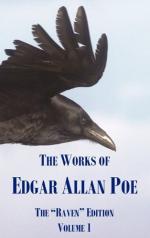|
This section contains 3,131 words (approx. 11 pages at 300 words per page) |

|
SOURCE: Cantalupo, Barbara. “The Lynx in Poe's ‘Silence.’” Poe Studies/Dark Romanticism 27, nos. 1-2 (June-December 1994): 1-4.
In the following essay, Cantalupo discusses the symbolic significance of the lynx in “Silence—A Fable.”
Poe chose the lynx as the final image in his tale “Silence—A Fable.” Quite simply, the lynx functions as a symbolic figure: it supersedes the Demon narrator and has the “last word”—the silence of its lynx-eye stare—effectively drawing the “moral” of the fable into its purview, not the Demon's.1 The lynx figures significantly in Benjamin Fisher's argument that “Silence” be read not as parody but as fable.2 He suggests that the lynx as a “classical symbol of perfidy … more closely associated with the vague ‘tomb’ rather than a realistic habitat for an actual animal … moves us deftly into the regions of fable.”3 Aside from being a pivot that helps define the form of...
|
This section contains 3,131 words (approx. 11 pages at 300 words per page) |

|


